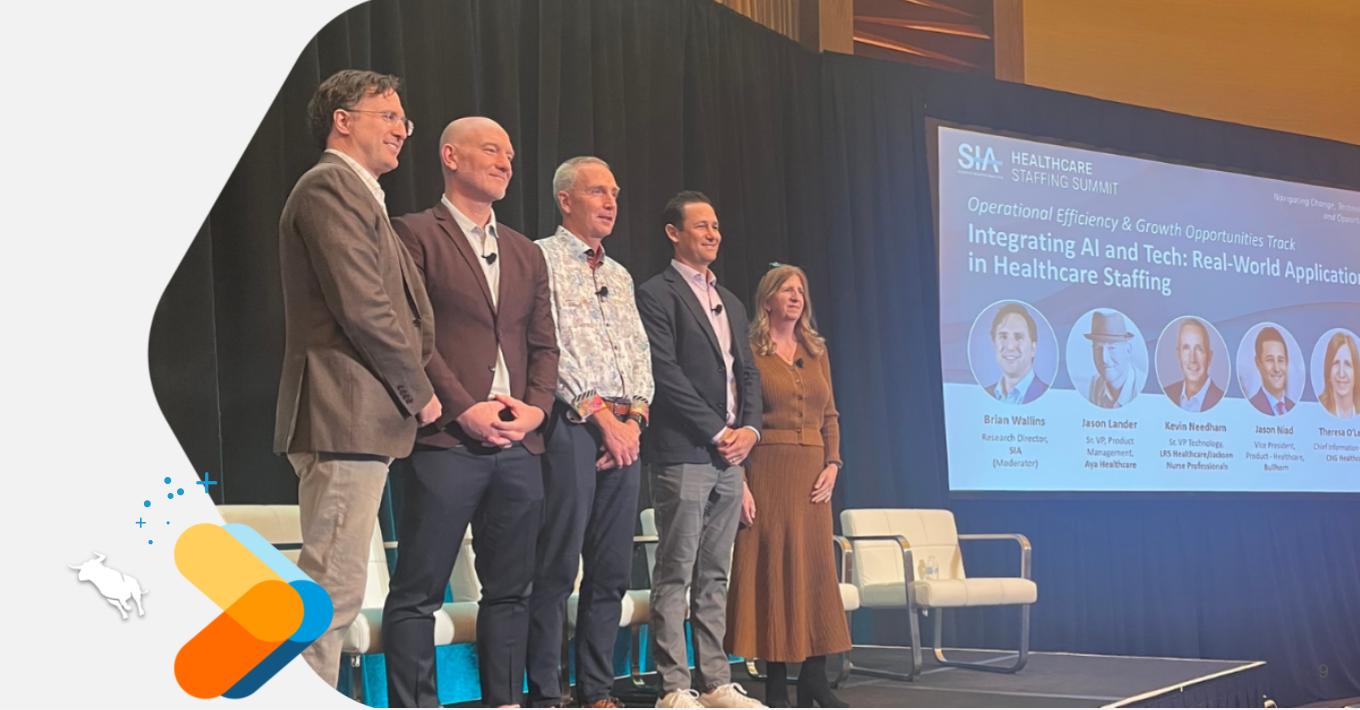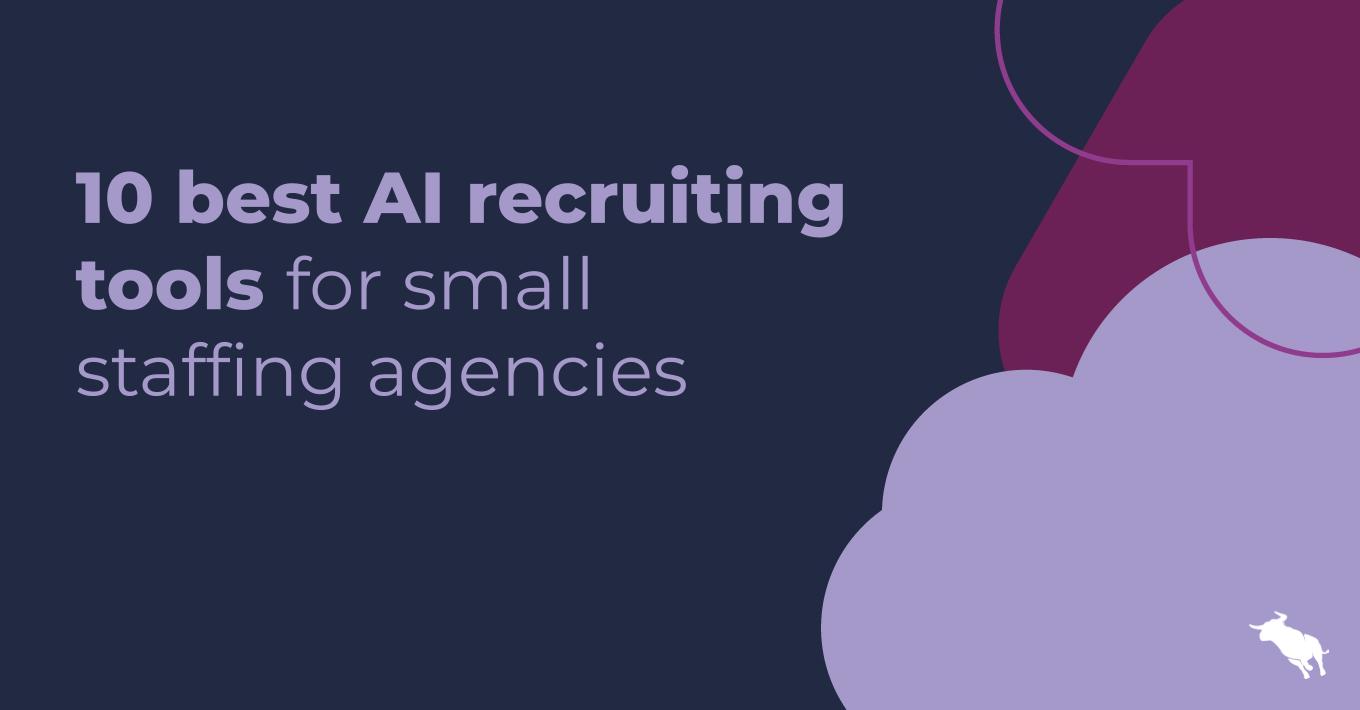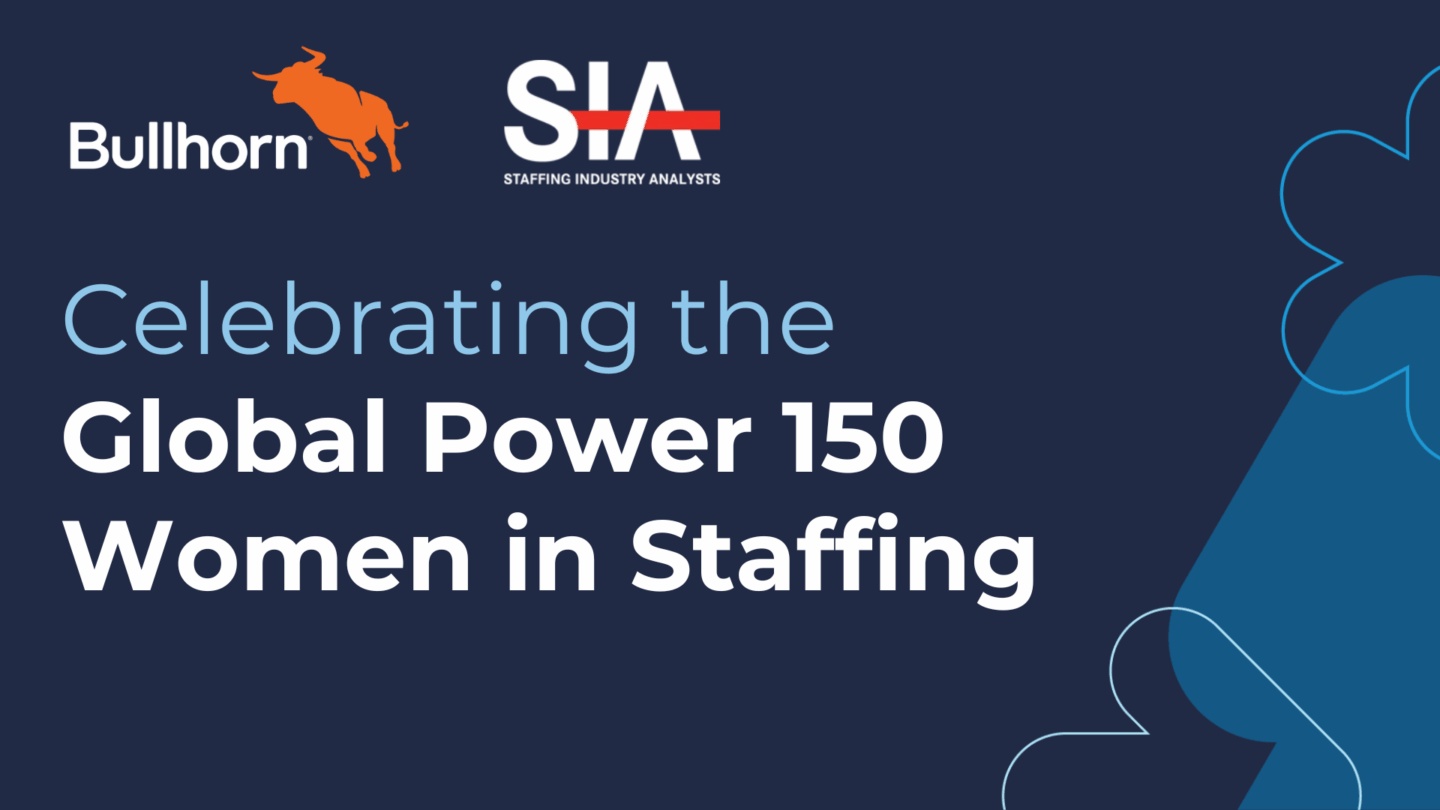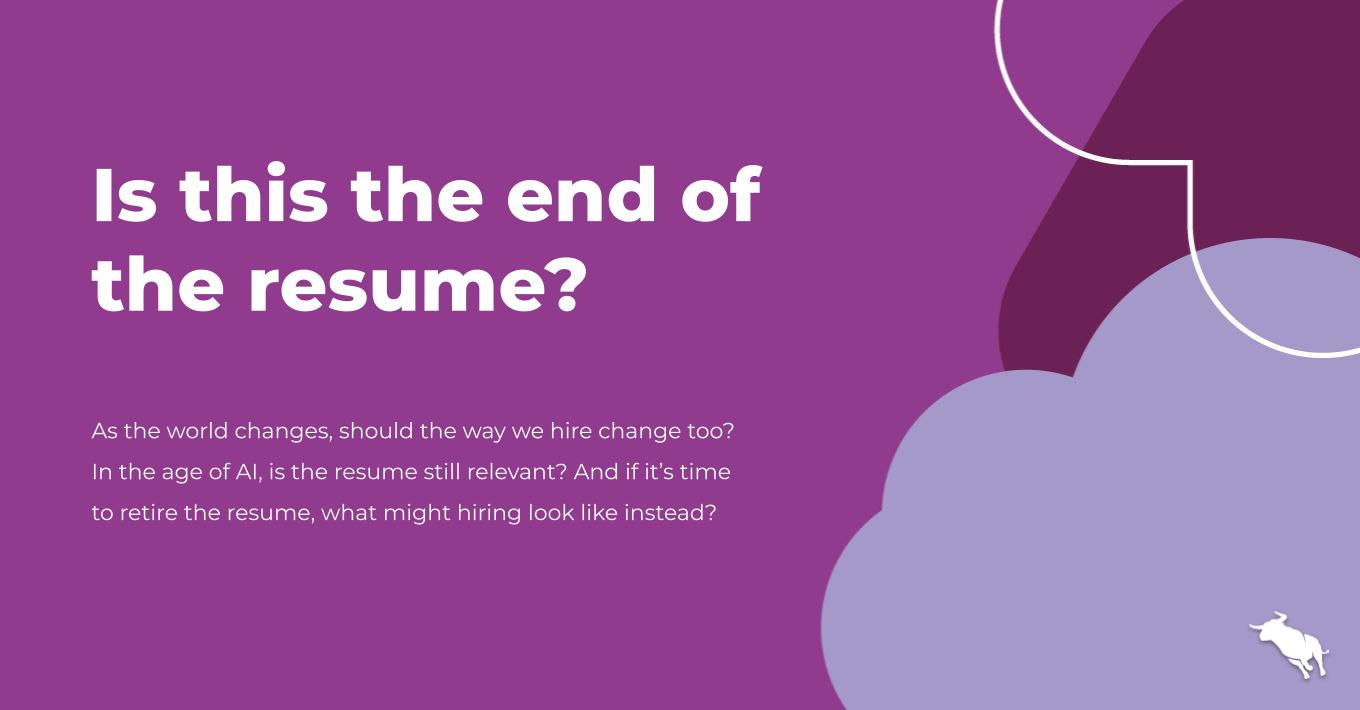Winning VMS business: Key takeaways from HCSS
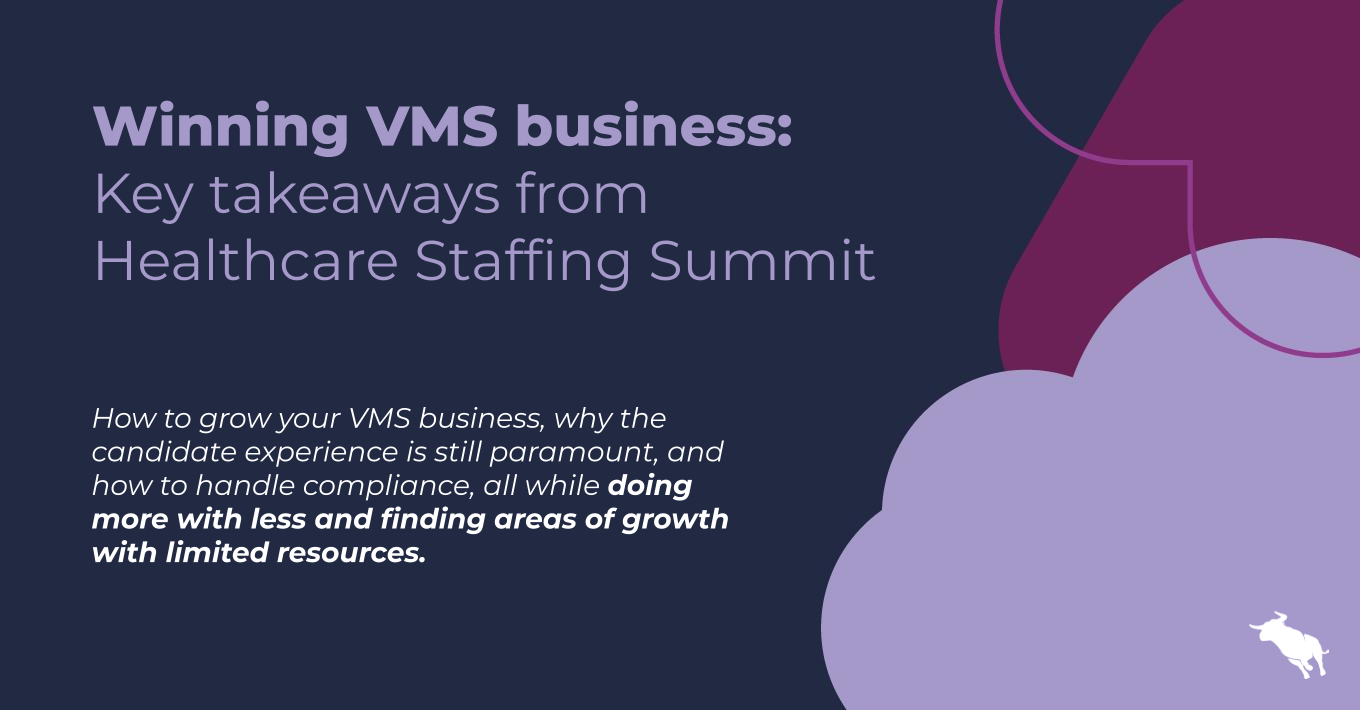
At this year’s Healthcare Staffing Summit, hosted by Staffing Industry Analysts (SIA), hundreds of staffing leaders and tech experts shared best practices, ideas, and predictions about where healthcare staffing is heading next. One consistent theme throughout the event? We’re at a pivotal moment for technology to disrupt the healthcare staffing industry. Using platform technology to attract and place providers is growing, which allows for much more automation and self-service for both providers and clients. In fact, staffing platforms have 28% of the market share in healthcare staffing in the U.S. in 2022, according to SIA.
Digital transformation is a top priority for healthcare staffing firms in the U.S., according to the GRID 2023 Recruitment Industry Trends Report. While healthcare staffing firms still value recruiters and the human touch, they’re looking to speed up time to submit to win in a VMS and MSP environment.
To lower the time to submit, healthcare staffing firms are automating and streamlining processes so they can maximize their time while making it easy for providers to work with them. Read on to learn more about how to grow your VMS business, why the candidate experience is still paramount, and how to handle compliance – doing more with less and finding areas of growth with the limited resources you have.
Winning in a VMS and MSP environment
Providing a great talent experience and speed to market are the keys to improving MSP relationships. Decreasing the time to submit is a major focus to beat the competition. To reach this end state, healthcare staffing firms want to become more efficient at every step with VMS automations. This includes automating the process of getting VMS jobs, reducing the effort to source quality providers, and submitting candidates with credentials back to the VMS.
How do you know what’s working and not working? You can find areas to improve by using reporting and analytics. In fact, according to Bullhorn data on healthcare customers, those using Bullhorn Analytics to measure and analyze their performance achieve a 45% higher average fill rate than those not tracking their progress.
Candidate experience is still paramount
Healthcare staffing is a people-first business with a well-known, persistent shortage of healthcare professionals. Healthcare job openings far exceed hires, and the physician and nursing shortages are worsening with more providers expected to leave the profession and acute care settings. When looking at nurses burning out, the top cause is a lack of personal respect, followed by a high workload. Nurses want to be treated with respect and feel valued. According to a 2023 SIA Travel Nurse Survey, leading staffing firms outperform in pay and trustworthiness, honesty, transparency, and quality of communication.
To stand out to providers, healthcare staffing firms are using technology to efficiently grow provider loyalty while using the human touch where it matters most. 79% of healthcare professionals stopped working with a firm because they weren’t placed quickly enough, according to Bullhorn’s 2023 Talent Trends Reports, which features survey responses from healthcare workers in North America. And that survey showed 71% of healthcare candidates hope to be placed in a job in four weeks or fewer.
This is where AI and automation come in. You can use these tools to increase your teams’ efficiencies while elevating your candidate experience. Dealing with a limited talent pool, healthcare staffing firms need to make the most of the relationships they already have with providers. When you exceed providers’ expectations, you’re also able to win more MSP and VMS business. It’s a win-win.
According to Bullhorn data on healthcare customers:
- Those using Bullhorn Automation achieve 28% faster time to first placement and a 93% alumni utilization rate.
- Those using Bullhorn Analytics see a 20% higher redeployment rate.
Maintaining compliance with an ever-changing set of rules
It has gotten more challenging to stay on top of ever-changing credential requirements that different states and facilities set – and these must be met before a provider starts a new role. According to NATHO, as of Summer 2023, 20 states have licensing requirements and five states have reporting requirements. And things keep changing, which lengthens the process and increases costs.
How do you get clinicians to provide credentials on time when the requirements keep changing while keeping the lift light for you? Healthcare staffing firms are looking for technology to streamline the credentialing process and make it clear to providers what they need to get them to start work sooner. Getting faster at credentialing improves your speed to market to grow your VMS business. “We’ve cleared a lot more people on time by using the credentialing in Bullhorn and being able to get our travelers to the clients a lot faster than we originally said they could be there,” said Cecilia Merrill, Director of Operations at CrossMed Healthcare. “In five months, we increased our cleared rate from 79% of providers to 91%.”
An opportunity ahead
Despite the headwinds of this year going into next year, there is optimism about the long-term growth opportunities in the healthcare staffing industry. Demographics of who needs care and what kinds of care they need mean higher demand for healthcare services over the coming years with the aging population and increased chronic disease in the U.S. Coupled with a limited supply of workers, this means the chronic shortage of qualified workers puts a premium on recruiting and retaining healthcare workers, which is a big opportunity for healthcare staffing firms.
Ready to maximize efficiency along the entire staffing workflow and win more VMS business? Learn how Bullhorn Healthcare can make a difference for your healthcare staffing firm.




